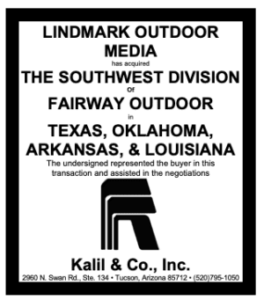
In addition to my representation of the sign industry in a variety of regulatory disputes and business transactions, my “night job” was as the former Mayor for 16 years and the current City Attorney for the last 10 of the City of Southside Place, a predominantly residential suburb of Houston, Texas. In this role, I have something of a behind the scenes perspective of the City’s sign regulations, and of our City Manager’s challenges in attempting to interpret and enforce them. One of the recent disputes is especially interesting, and it may afford billboard operators some insight on dealing with sign regulators.
While supervising the City’s budget, trash disposal, police and fire personnel, and the myriad other tasks associated with running a community of about 2,500 residents and 50 businesses, the City Manager also acts as the Sign Administrator in interpreting, applying, and enforcing the Sign Ordinance. Among the complaints he recently received from a citizen was a flag displayed by a neighbor reading “Let’s Go Brandon.” The complaining citizen was well aware this was code for “F_ck You Biden,” and he demanded the flag be removed as profanity and hate speech. The neighbor, on the other hand, claimed the flag contained common words, albeit in a satirical sense, and he objected to any government censorship of it.
The first place the City Manager went after hearing the competing and conflicting complaints of the citizens was to Yours Truly as the City Attorney. And, I was justifiably concerned that reading the sign, or in this case flag, to determine whether the message was permitted or prohibited was further complicated by the Regulator’s application and interpretation of the code to determine the real meaning of this particular “Let’s Go Brandon” flag. Fortunately, the City had previously amended its Sign Ordinance to render it content neutral, so the City Manager didn’t have to decide between these two versions of prohibited profane hate speech or satire protected by the First Amendment. Instead, the Ordinance allowed all flags, regardless of their content, other than those rendered exempt as officially displaying nations or states, as long as they were maintained no more than seven days in any 60 day period. As I recall, the City Council in passing this content neutral restriction on flags wanted to permit citizens to waive flags promoting their favorite teams before the big games, and it figured there was about seven home games over the 60 day season. But, of course, it also follows that this regulation permits a flag to read “Let’s Go Brandon” or “Dump Trump,” as well as “Hook ‘em Horns” or “Gig ‘em Aggies,” as long as the flag was displayed no more that seven days in any 60 day period. The City Manager cited this Ordinance provision to the flag owner, who readily complied and removed the flag after seven days.
This matter graphically demonstrates the difficult challenges confronting sign regulators, especially when sign regulations are content based and subjective. After all, it’s hard enough to determine when a sign is permitted as an on-premise or prohibited as off-premise, based on reading the message on the sign and evaluating the premises on which it is located. The regulator’s task becomes even more challenging when he has to exercise subjective discretion in interpreting a sign’s message, like “Let’s Go Brandon,” to determine whether and how it is regulated. Therefore, objective criteria, such as height, size, number and duration, are superior means for regulating signs, from the perspective of both the regulator and the citizens.
[wpforms id=”9787″]
Paid Advertisement

















